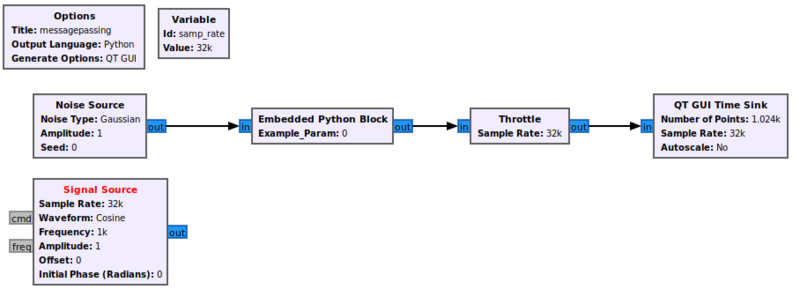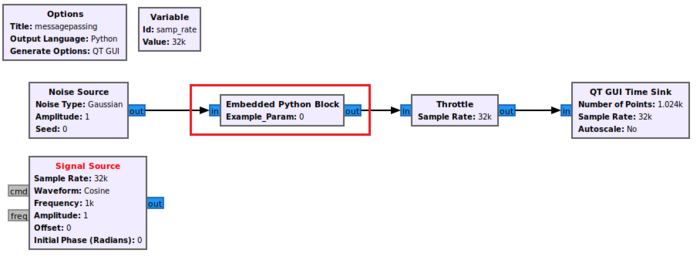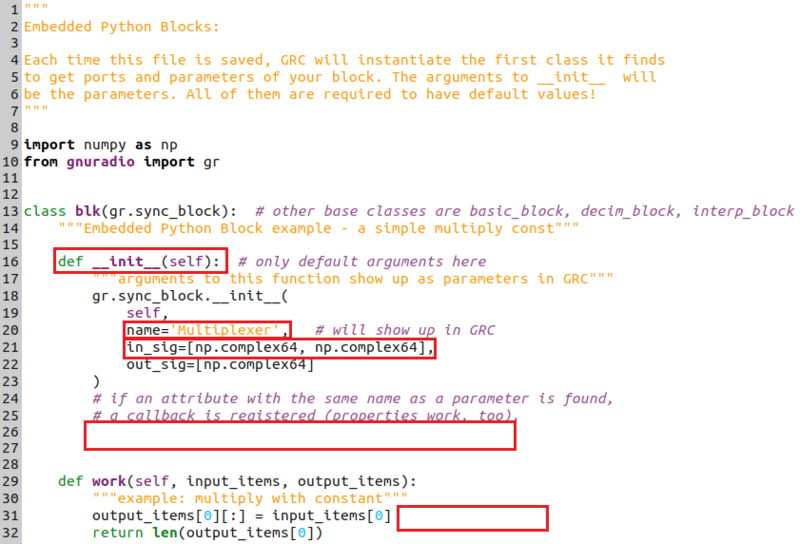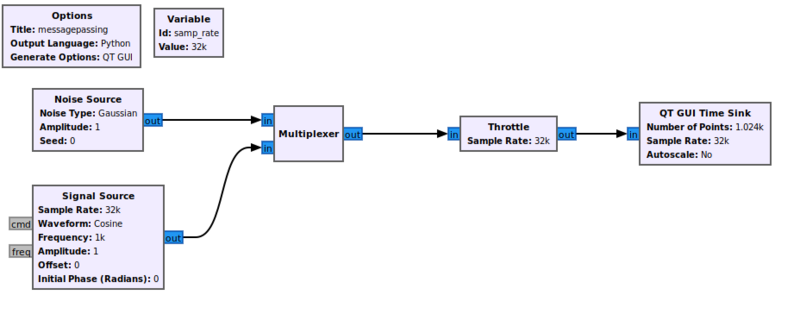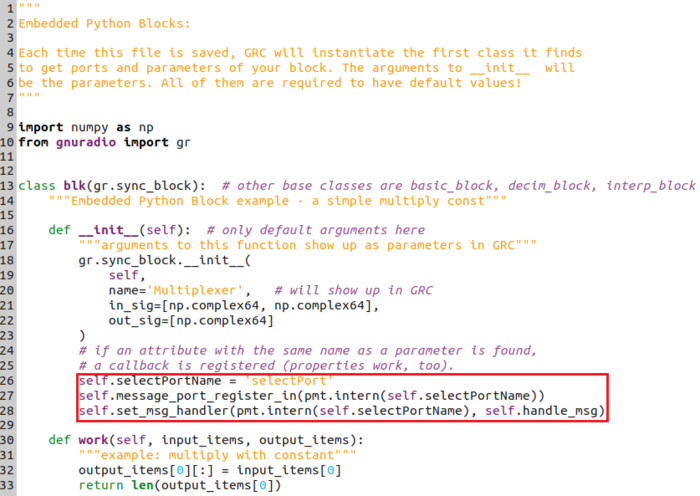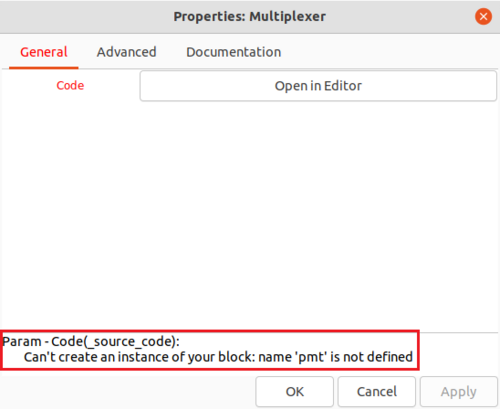Python Block Message Passing
The previous tutorial, Creating Your First Block, demonstrates how to create a Python block using the Embedded Python Block. The next tutorial, Low Pass Filter Example, demonstrates how to use filtering blocks in GNU Radio.
Message Overview
Messages are an asynchronous way to send information between blocks. Messages are good at conveying control data, maintaining a consistent state across blocks and providing some forms of non-data feedback to blocks in a flowgraph.
Messages have a couple unique properties:
- There is no sample-clock based guarantee when messages will arrive
- Messages are not associated with a specific sample like a tag
- Message input and output ports do not have to be connected in GRC
- Message ports use the Polymorphic Type (PMT)
Message ports are denoted by a grey color and their connections are distinguished by dashed lines:
More information on message passing with PMTs can be found here: Message Passing
Flowgraph Overview
The following flowgraph will demonstrate how to:
- Add message sending and receiving ports to Python blocks
- Transmit messages
- Receive and handle messages
- Adapt block behavior in the work() function based on a received messages
Two custom Embedded Python Blocks will be created to:
- Select, or multiplex, one of two input signals based on a receive message
- Count the number of samples and send a message to the multiplexing block to switch inputs
This tutorial assumes you have already created at least one Embedded Python Block. If not, please complete the tutorial Creating Your First Block before moving on.
Start by adding the following blocks to the flowgraph and connecting them:
- Noise Source
- Signal Source
- Python Block
- Throttle
- QT GUI Time Sink
Multiplexer: Defining Signal Input Ports
Double-click the first Embedded Python Block and open the source in the editor:
The example_param is not needed, so remove the variable example_param from the __init()__function:
def __init__(self): # only default arguments here
and delete the line:
self.example_param = example_param
Change the name of the block to Multiplexer:
name='Multiplexer',
Add a second input to the block:
in_sig=[np.complex64, np.complex64],
Delete the multiplication by example_param:
output_items[0][:] = input_items[0]
Save the code (CTRL+S) and return back to GRC. The name of the block will have changed and the block will now have two inputs. Connect the Noise Source and Signal Source to the two inputs:
Multiplexer: Defining Message Input Port
Return to the code editor. A input message port needs to be added. Create a variable to name the port,
self.selectPortName = 'selectPort'
and then add a line to create, or register, the input port:
self.message_port_register_in(pmt.intern(self.selectPortName))
and finally, add a line to connect the input port with a message handler.
self.set_msg_handler(pmt.intern(self.selectPortName), self.handle_msg)
Save the code (CTRL+S). Notice that syntax errors are listed in the properties of the Embedded Python Block:
This error says that the pmt library needs to be imported. Return to the code editor and add the proper import statement:
import pmt
Multiplexer: Creating Message Handler
The message handler function now has to be defined. A message handler is the function which is called when a message is received. This message handler will switch between the two input ports based on the received message. The received message will either be a Boolean True or False. Define a new variable under __init()__ which will be the input selector,
self.selector = True
Now define the handle_msg() function:
def handle_msg(self, msg):
self.selector = pmt.to_bool(msg)
The function pmt.to_bool() takes the message PMT and then converts the data type into Python's Boolean data type. PMTs are used in message passing to abstract data types. For example, messages can be used to send and receive strings, floats, integers and even lists. More information about PMTs can be found on the Polymorphic Types (PMTs) wiki page.
Multiplexer: Using a Message
The external interface of the multiplexer is complete. Now the block needs to have the multiplexing operation added through modification of the work() function. Add the following code to the work() function:
if (self.selector):
output_items[0][:] = input_items[0]
else:
output_items[0][:] = input_items[1]
Creating a Message Output Port
- saving code 'compiles' the python and error messages are displayed the EPB window
- message ports do not have to be connected like stream/vector ports
The next tutorial, Low Pass Filter Example, demonstrates how to use filtering blocks in GNU Radio.

